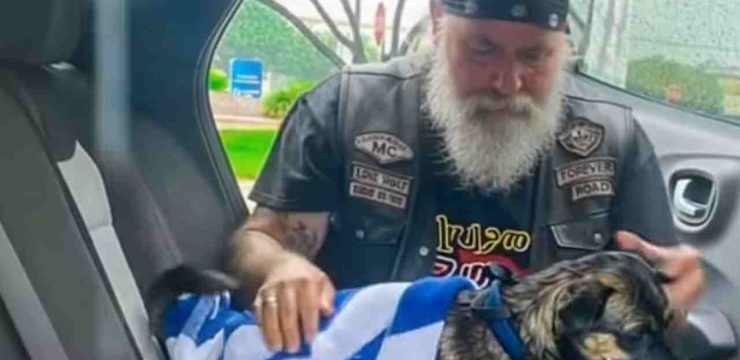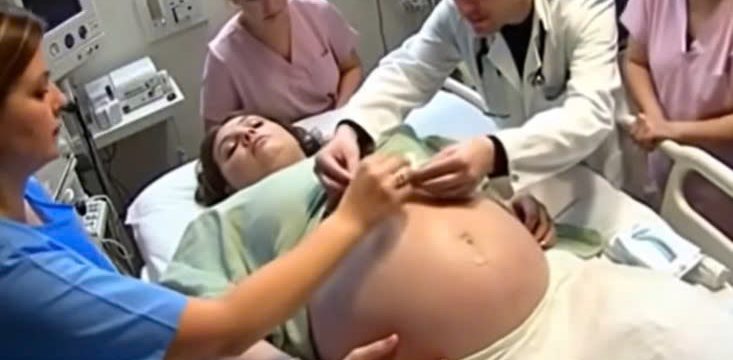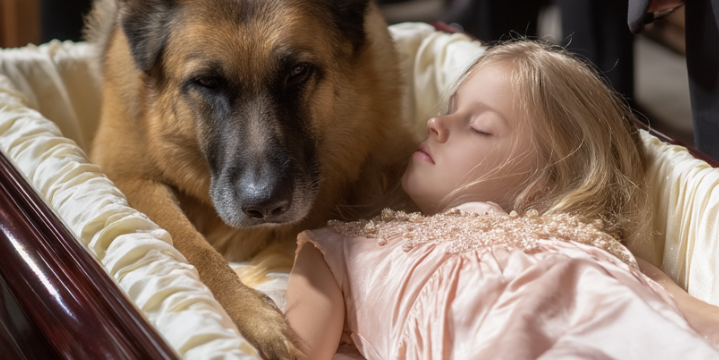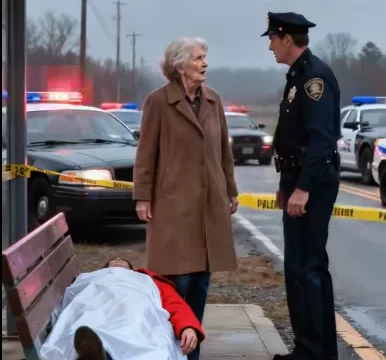When rescuers first found her, she was curled up inside an old, discarded tire, surrounded by piles of junk and forgotten things. Her tiny body was completely hairless from a severe case of mange, and her skin looked painfully raw. She was weak, trembling, and her eyes carried a look of quiet resignation—as if she no longer believed that life could offer her anything kind. It was clear she had been through unimaginable hardship and had simply given up.
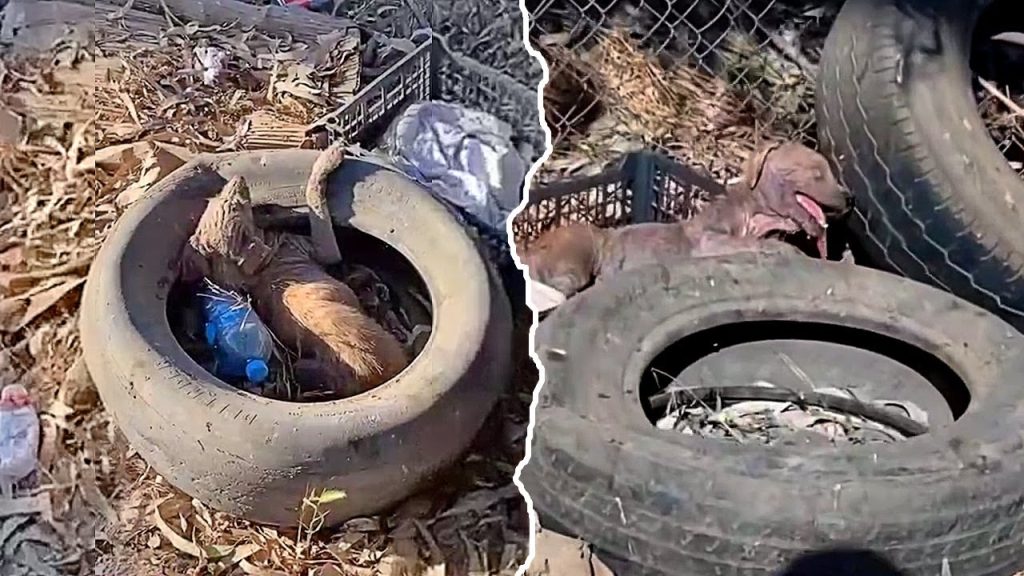
But fate had other plans for her. A group of rescuers happened to be checking the area that day and spotted her faint movement inside the tire. They approached gently, speaking softly so as not to frighten her. When they lifted her out, she didn’t resist—she was too weak even to struggle. One of them cradled her in their arms as if holding something precious and fragile, promising her she would never have to suffer again. That’s when they named her Anita.
Back at the shelter, the team gave her warmth, food, and a soft bed—things she hadn’t felt in a very long time. The veterinarians examined her closely, and what they found was heartbreaking. Anita wasn’t just suffering from severe mange; her body carried multiple old injuries. X-rays revealed a fractured leg and a fissure in her hip, likely caused by past trauma. Her condition was worse than anyone imagined. On top of that, she was diagnosed with high blood sugar levels and a hernia, conditions that made her even more fragile.
Because her health was so unstable, the vet decided not to operate on her leg immediately. She needed time—time to regain strength, to eat, to rest, and to believe again that she was safe. For two long weeks, the shelter team worked around the clock to help her heal. They bathed her carefully with medicated shampoo to soothe her skin, gave her small nutritious meals, and whispered gentle words each time she trembled. They wanted her to know that kindness still existed in the world.
During this period, another painful truth came to light: Anita was completely blind. No one had realized it at first, but her eyes could not perceive anything at all. It explained why she had been so still, why she moved so cautiously—she had been surviving in total darkness, guided only by her sense of smell. Yet even in that darkness, she began to recognize the voices of her caretakers. She wagged her tail slightly when they approached, as if trying to show her gratitude for the first bit of warmth she had felt in a long time.
Her journey was slow and often uncomfortable. The medicated baths she needed were necessary but unpleasant; the water sometimes made her shiver, and her frail body shook from both fear and cold. But through it all, she never snapped, never lost that small flicker of trust she had begun to rebuild. Every day she tried to stand a little longer, eat a little more, and face another day with quiet courage.
After weeks of tender care, Anita’s strength began to return. Her appetite improved, her skin started to heal, and the dullness in her face began to fade. When the time finally came for her leg surgery, the vet and the team were ready. The operation went smoothly—no complications, no setbacks—and Anita recovered faster than anyone expected. Her caregivers cried tears of joy when she took her first steady steps after the bandages were removed.
From that moment on, everything changed. Her body, once frail and wounded, began to transform. Her fur grew back—soft, golden, and thick—until she hardly resembled the same dog they had found in that tire. She became playful, curious, and eager to explore. Though she could not see, she learned to navigate the shelter confidently, guided by her sense of smell and the sound of the voices she trusted. Her tail wagged constantly now, sweeping the air in joyful circles every time someone called her name.
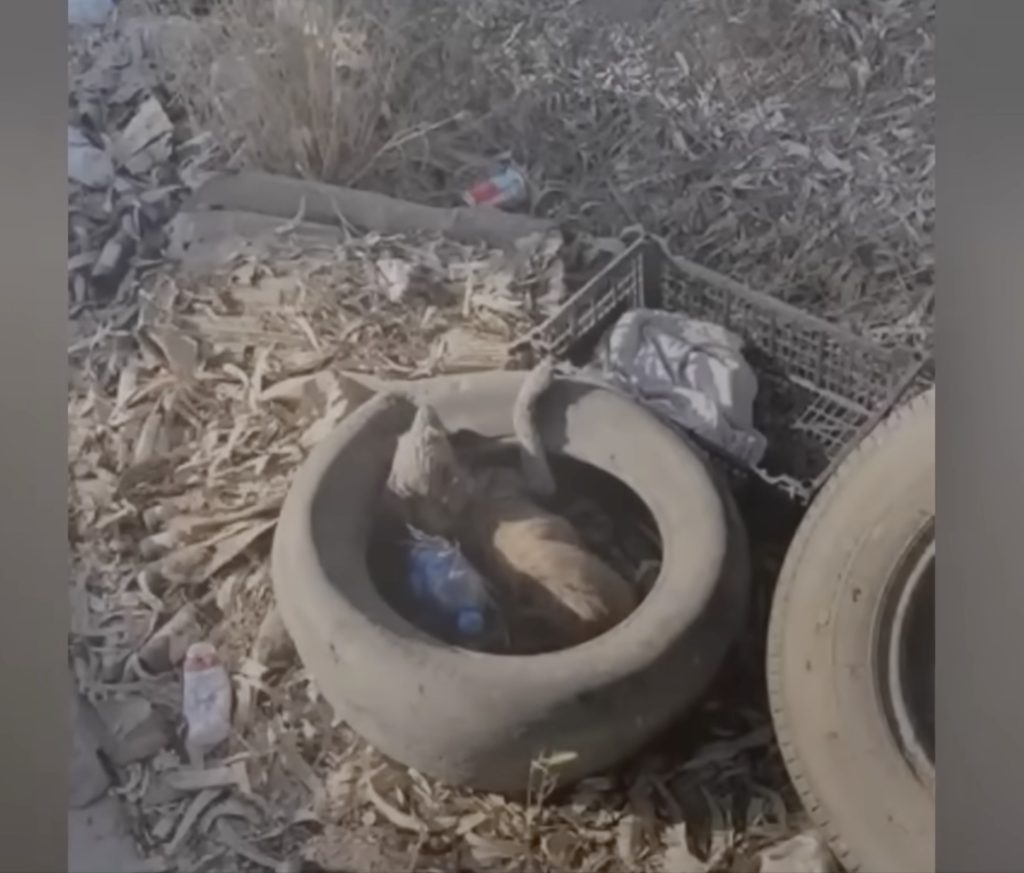
Anita’s recovery was nothing short of miraculous. With patience, proper medical care, and endless love, she became a symbol of resilience. The staff often said she taught them more about hope than they ever could have taught her. Watching her trot proudly on her leash, head lifted high, was like witnessing a small miracle unfold—a reminder that even the most broken souls can find light again when shown compassion.
The same little dog who once lay forgotten in a pile of trash was now full of life, shining with energy and trust. She adored being petted, leaned against the legs of her caretakers for affection, and loved short walks in the sunshine. Her confidence grew each day. Even though she would never see the world with her eyes, she experienced it through love—through the touch of kind hands, the warmth of a blanket, and the joy of being alive.
What made Anita’s story so touching wasn’t just her physical recovery, but the emotional transformation that followed. She had every reason to close herself off, to mistrust, to fear. Yet she chose the opposite. Her heart opened wider with every act of kindness shown to her. The people who rescued her often said that Anita didn’t just survive—she inspired them to believe that no creature is ever truly beyond saving.
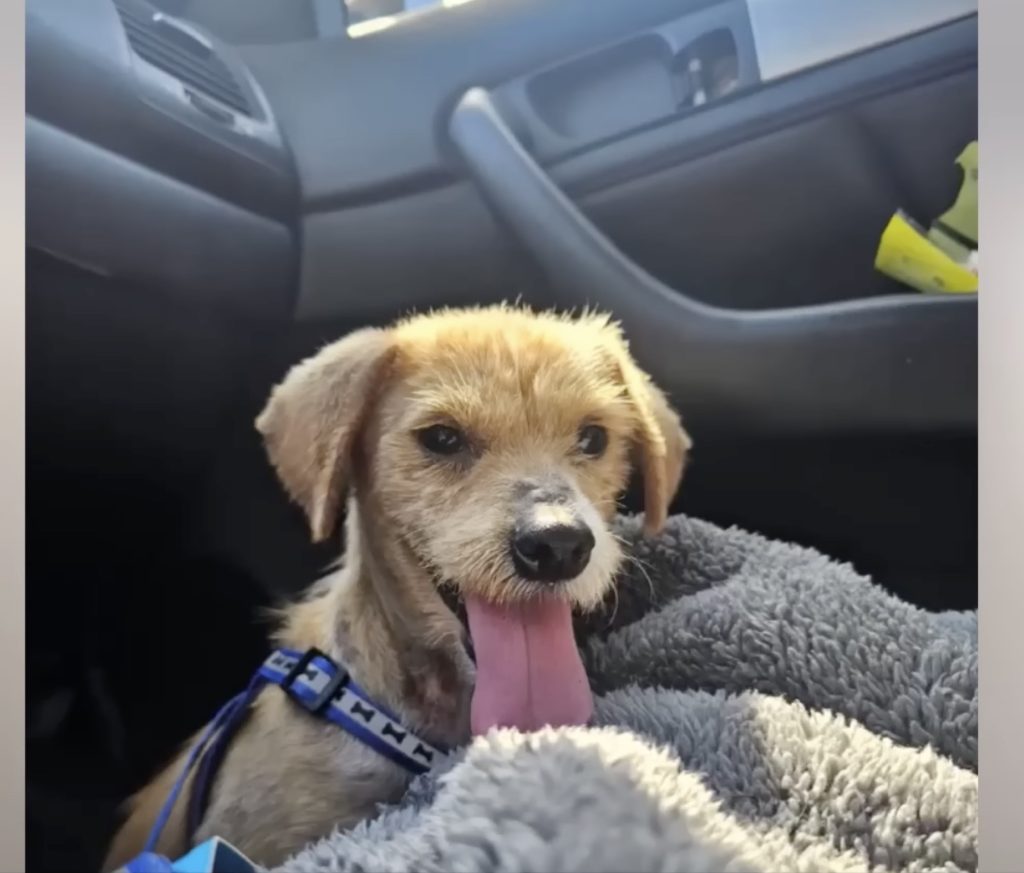
In the end, Anita’s story is one of courage, compassion, and second chances. Her journey from a dark, hopeless corner of the world to a life filled with care and happiness shows what love can do when it meets suffering with patience and faith. She is now healthy, strong, and surrounded by people who cherish her. Her coat glistens in the light, her tail never stops moving, and though her eyes cannot see, her spirit shines brighter than ever.
Anita’s transformation reminds us that even when life seems unbearably cruel, hope can still find its way through. Sometimes, it comes in the form of a gentle hand reaching into a discarded tire to lift a forgotten soul—and sometimes, it’s the quiet resilience of that soul choosing to live again. Her story is a testament to the power of compassion, the endurance of life, and the simple truth that every being deserves a chance to heal and be loved.
